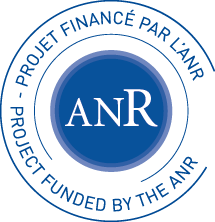Warning: This is a sample of our highlights that we selected for their diversity. See more of our results in the publication page.
Strategies for Quantum Races
One of our main motivations for studying quantum races is to model quantum computers mining the decentralized currency Bitcoin. Mining is the process by which new blocks of transactions are added to the history of Bitcoin transactions, called the blockchain. The winner of a race to solve a computational search problem gains the right to add a new block of transactions to the blockchain, and participants in this race are called miners. Quantum miners could use Groverís algorithm to solve the search problem with quadratically fewer search queries than needed classically. But what should the strategy of quantum miners be when competing against each other?
Quantum Algorithms for Deep Convolutional Neural Networks
We design a quantum convolutional neural network (QCNN) algorithm with a modular architecture that allows for any number of layers, any number and size of kernels, and that can support a large variety of non linearity and pooling methods. Our main technical contributions include a new notion of a quantum convolution product, the development of a quantum sampling technique well suited for information recovery in the context of CNNs and a proposal for a quantum backpropagation algorithm for efficient training of the QCNN.
Decodable quantum LDPC codes beyond the square root distance barrier using high dimensional expanders
Constructing quantum LDPC codes with a minimum distance that grows with n has been something of a challenge. It is a wide open problem as to whether there exist families of asymptotically good quantum LDPC codes. More specifically, known quantum LDPC codes do not surpass a √n barrier for the quantum minimum distance. It is arguably one of the most intriguing problems of the theory of quantum LDPC codes, as to whether there exist codes whose minimum distance significantly exceed the √n barrier. We contribute to this question by exhibiting codes that go beyond previous lower bounds, and set a new record for the minimum distance that scales as √n log n.
On the Possibility of Classical Client Blind Quantum Computing
We give a protocol for classical client remote state preparation, that requires minimal resources. This primitive has many applications, most prominently, it makes blind quantum computing possible for classical clients. The protocol is proven secure against honest-but-curious servers and any malicious third party in a game-based security framework. Unlike previous solutions, our approach is modular, as the primitive we propose can be used for a number of functionalities, including delegation of quantum computations, to replace the required quantum communication and make the functionalities directly accessible to classical parties. We also run an experimentation on IBMís quantum cloud using a toy function. This is the first proof-of-principle experiment of classical client remote state preparation.
Quantum Divide and Compute: Hardware Demonstrations and Noisy Simulations
We show the first practical implementation of recently introduced methods that decomposes a circuit into smaller ones compatible with NISQ devices. We establish a precise noise model of IBMís 20-qubit Johannesburg processor using available calibration data, and we use the model to simulate the experimental results. This noisy simulation allows us to quantify and explain the experimental results we obtain, and it paves the way to a noise-aware optimization of this fragmentation technique.
